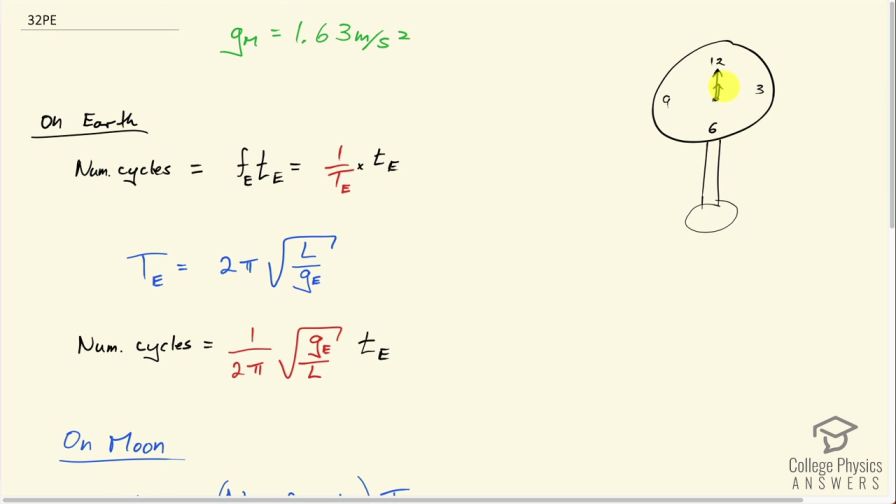Question
At what rate will a pendulum clock run on the Moon, where the acceleration due to gravity is , if it keeps time accurately on Earth? That is, find the time (in hours) it takes the clock’s hour hand to make one revolution on the Moon.
Final Answer
for the hour hand to make one revolution on the moon.
Solution video
OpenStax College Physics, Chapter 16, Problem 32 (Problems & Exercises)

vote with a rating of
votes with an average rating of
.
Calculator Screenshots
Video Transcript
This is College Physics Answers with Shaun Dychko. We imagine that a pendulum clock which operates nicely on Earth— which is to say that the hour hand takes 12 hours to go around one time— that pendulum clock is placed on the Moon, where the acceleration due to gravity is only 1.63 meters per second squared and the question is how much time will pass for this hour hand to go around one full rotation? So the way the clock is designed is that when this pendulum goes back and forth in one particular cycle, the gears inside the clock mechanism will advance the hour hand some given amount and it's calibrated for Earth such that a certain number of swings will cause the hour hand to do one full rotation in 12 hours. And on the Moon though the pendulum will be having a different period and so that same number of cycles will be needed but it will take a different amount of time for those cycles to occur. Okay! So the first part of our solution is to figure out how many cycles are needed for this pendulum in order for the clock to indicate 12 hours has passed? So the number of cycles is frequency multiplied by time or we will take the reciprocal of the period and replace frequency with that because we have a formula for the period of a pendulum and I have subscript E on here to indicate that these are quantities on the Earth. So we have the period of the pendulum on Earth and we are going to multiply that by the amount of time that passes on Earth, which is 12 hours, and then that will be the number of cycles the pendulum needs to do in order for the hour hand to get advanced one rotation. So this is the length of the pendulum, which we don't know, divided by acceleration due to gravity on the Earth and we are taking the square root of that quotient and multiplying by 2π to get the period of the pendulum on Earth and this formula takes the reciprocal of that period so I am taking the reciprocal of this expression and writing it here. So this is 1 over 2π times square root of acceleration due to gravity on Earth divided by the pendulum length. And we are multiplying that by the amount of time that passes on Earth— which is 12 hours—to get the number of cycles. Okay! Then on the Moon, it's basically this formula but we have solved for time but now it's time that is going to be passing on the Moon and that will equal some number of cycles that we have calculated here multiplied by the period of the pendulum on the Moon so number of cycles times period. So number of cycles is this being copied here where I have put the factor time on Earth in the numerator here and then multiplying by the same period formula but now with the acceleration due to gravity on the Moon. And then the 2π's cancel and the square root lengths cancel and we are left with the time that's passed on Earth multiplied by the square root of acceleration due to gravity on Earth divided by acceleration due to gravity on the Moon. So 12 hours has to pass in order for the hour hand to make one rotation and multiply that by square root of 9.8 meters per second squared divided by 1.63 meters per second squared and 29.4 hours will need to pass in order for the hour hand to make one full rotation on the Moon.
Comments
Could you please explain why do we take t = 1h, if it takes 12h for the hour hand to make 1 revolution on the Earth?
Hello Yehor, thank you so much for pointing out this mistake. I have posted a note above the video to explain the issue: " While the video correctly calculates the factor by which time elapsed is greater than the time indicated on the moon, which is a factor of 2.45, instead of multiplying that factor by 1h, it should instead be multiplied by 12h. Shaun was incorrectly thinking about the minute hand completing one revolution, which takes 1 hour, instead of the hour hand, which takes 12 hours."
Thanks again,
Shaun
This video was updated on Jan. 11th, 2024.


